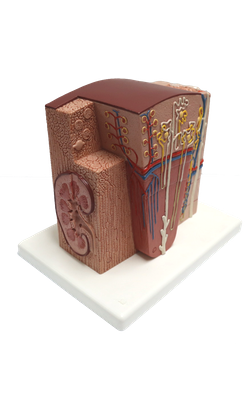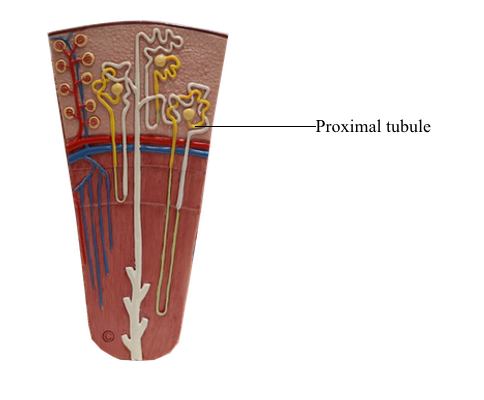Main Model

Zone C : Proximal tubule

The renal corpuscle, also known as a Malpighian corpuscle, is the
essential portion of the nephron. It consists of a renal glomerulus and
Bowman's capsule. The corpuscle has two poles: the vascular pole and
urinary pole. At the vascular pole, the afferent arteriole (which
supplies the capillary network of the glomerulus) enters, and the
efferent arteriole (which collects the blood from the capillaries)
leaves the corpuscle. The urinary pole is the beginning of the proximal
convoluted tubule; it is continuous with Bowman's space.
The proximal convoluted tubule, starting at the urinary pole, is about 14 mm long and 50-60 micrometer wide. It follows a tortuous course through the cortical labyrinth, medullary ray, and the outer stripe of outer medulla, and is continuous with the thin segment of the loop of Henle. The proximal convoluted tubule is lined by a layer of cuboidal cells, which are characterized by the brush border at the free surface, striations at the basal surface, and a large, round nucleus in the center of the cytoplasm. The striations are recognized at the electron microscopic level as numerous mitochondria and an infolded basal cytoplasmic membrane. The function of these epithelial cells is to reabsorb the glucose, amino acids, ascorbic acids, chloride, and sodium from the filtrate within the tubule.